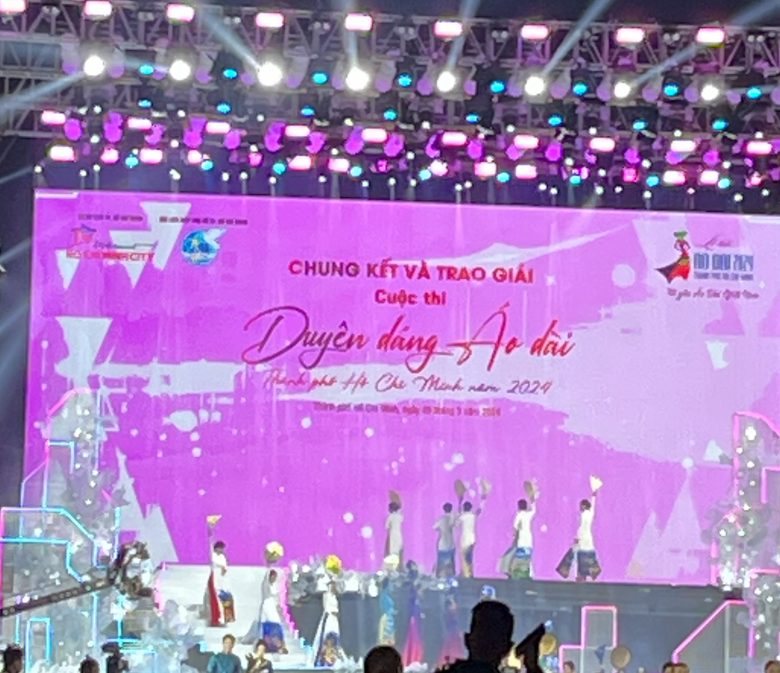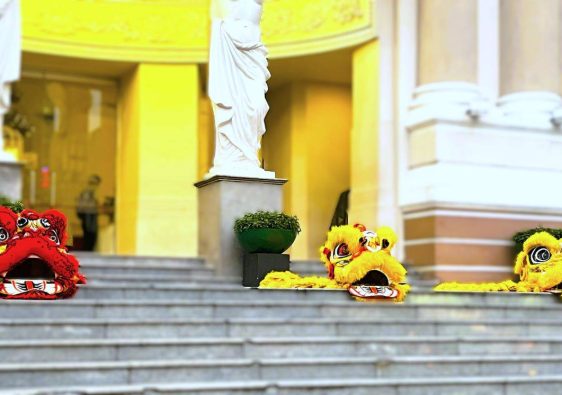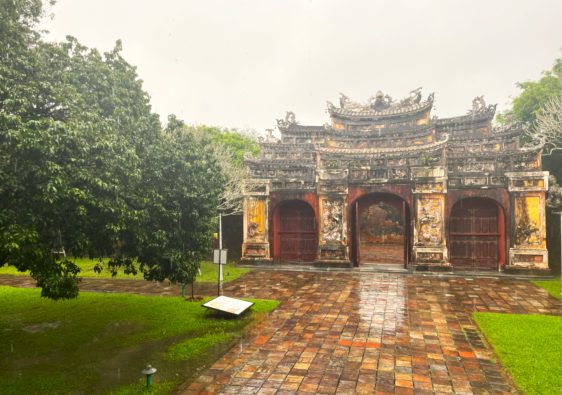One of the things that I love about Saigon is that fashion seems to be governed by the individual. No perceptible rules. In any given group of people I see everything from shorts with T-shirts and spiked heels, to skirts, business suits, or frilly dresses with flip flops or gym shoes. No one looks out of place or disheveled. Whatever the outfit, it usually looks thought out and put together. I love to be living in a place that celebrates individual style. Which includes those who wear the elegant, traditional Ao Dai.
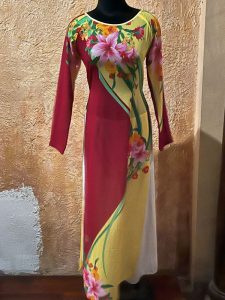
The AO Dai (Ao is roughly pronounced “ow,” and the “D” is pronounced like a “y” in southern Vietnam and like a “z” in the north) was introduced in 1627 as a “five-bodied (piece)” garment by Lord Nguyen Phuc Khoat. The early version of the outfit revolutionized fashion of the time by changing women’s long skirts to pants.
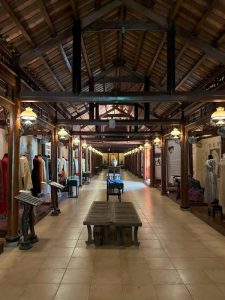
The Ao Dai Museum, nestled in a quiet rural part of District 2 in Saigon, traces the history of this classic and beautiful outfit through the years. It demonstrates continuous changes and updates for the times – such as, a pretty paisley-print Ao Dai from the 1970s.
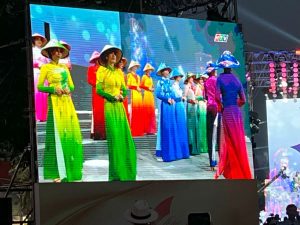
The Vietnamese are very proud of their culture and the Ao Dai is a big part of that. In 2019, The Vietnam Women’s Union (VWU) launched “Vietnam Ao Dai Week. The annual festival, held the first week in March, promotes the pride and cultural importance of the traditional outfit. Timed to coincide with “International Women’s Day (March 8), Vietnamese women are encouraged to wear Ao Dai all week. The 2024 festival in Saigon culminated with a massive and colorful theatrical pageant on the main pedestrian street in District 1 (Nguyễn Huệ).
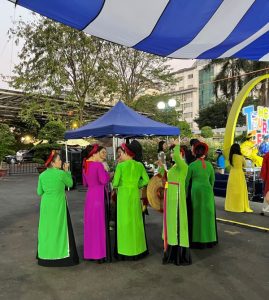
Although the museum traces the heritage of Ao Dai, it has in no way, become a relic of the past. While I’ve mentioned some festivals and occasions that locals may wear Ao Dai, we regularly see many women and men (the male counterpart is called an Ao Gam) young and old, wearing this culturally significant and beautiful garment. No festival or dress-themed holiday needed.
